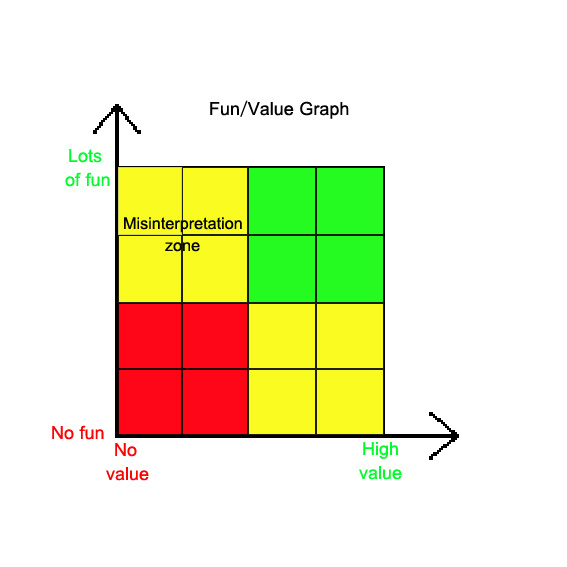 Like most of you, I’ve had my fair (or unfair) share of meetings. Some were great and a lot of them were just ok. But a few weeks ago a colleagueof mine said something during a ROTI evaluation that forced me to look back at all those previous “great” meetings and re-evaluate their TRUE value.
Like most of you, I’ve had my fair (or unfair) share of meetings. Some were great and a lot of them were just ok. But a few weeks ago a colleagueof mine said something during a ROTI evaluation that forced me to look back at all those previous “great” meetings and re-evaluate their TRUE value.
What he said was: “Am I my really obtaining value from this activity or am I just having a good time?”
My jaw dropped!
How can such a simple statement stir up so many issues in my mind? It not only forced me to re-evaluate the specific activity he was referring to, but everything else I’d done and was about to do!
Leaving aside the fact that fun has value in itself, why not challenge an initial assessment with a Fun vs. Value Evaluation? A meeting might have been fun, but did we reach our objectives? As an Agile coach (or ScrumMaster), if I suspect a misinterpretation of the true value of a meeting or an activity, I might try to validate it by whipping out a Fun/Value graph:
No fun and No value
If the meeting had low value, there’s a good chance that fun is also on the low side. Those situations are usually easy to detect and numerous corrective actions can be put in place.
No Fun and High Value
Now here’s an interesting situation! We managed to reach our objectives but getting there was about as much fun as a root canal. This situation might hurt in the long run as valuable contributors conveniently forget to attend.
A Scrum example:
The recurrent Product Backlog estimation meeting (Backlog maintenance) is essential and the team is able to reach its goal with a two-hour meeting…but for most it feels like a five-hour meeting. The team sits in a large conference room, the projector is humming and item by item, one or two members shoot out some “man days”.
Why not estimate using Poker or Wall planning? Maybe every two weeks, we hold this meeting in a local café or bar. Everyone contributes, estimates increase in value and…IT’LL BE FUN! We might even save time, making it still more fun!
Lots of Fun and High Value
This is good situation to be in! Some might say, if it ain’t broke, don’t fix it. I’m more of a “Good is the enemy of great” kind of guy. But trying to make it even better can be tricky. If such attempts are made, make sure the team buys in to it or better yet, get the team to come up with new and innovative ways to reach their objectives more efficiently.
Lots of Fun but No Value
Now here’s the situation that motivated me to write this article. Is it possible to be blinded by fun? Of course! The meeting might have been called to shed some light on a problematic issue, but ended being little more than a laugh-fest. We walk out of there feeling pretty good but the real issue is nowhere near being resolved.
Where I work, we have bi-monthly meetings to explore various situations when coaching individuals. We do this through role playing; two individuals acting as coach and coached. As you can imagine, some scenarios are quite hilarious. Fun and laughter is guaranteed! It was so much fun that I had a (false) sense that we were accomplishing something of substance – that is, until my colleague casually questioned himself and stated, “Am I my really obtaining value, or am I just having a good time?”
Once I filtered out the laughing and that great feeling associated with being with my colleagues, nothing much was left. There was some value but not nearly as much as I initially thought. It looked something like this: With that new information in hand, we restructured the activity in order to increase its value, all while maintaining The “Fun”.
With that new information in hand, we restructured the activity in order to increase its value, all while maintaining The “Fun”.
Value or Just Fun?
It pays to be aware of what zone we are in, especially when in the “Misinterpretation Zone”. High levels of fun are beneficial to any activity, but reaching clear objectives remains the ultimate goal.
I’m looking forward to applying this in the real world and seeing what happens! I’ll let you know how it goes. 🙂

